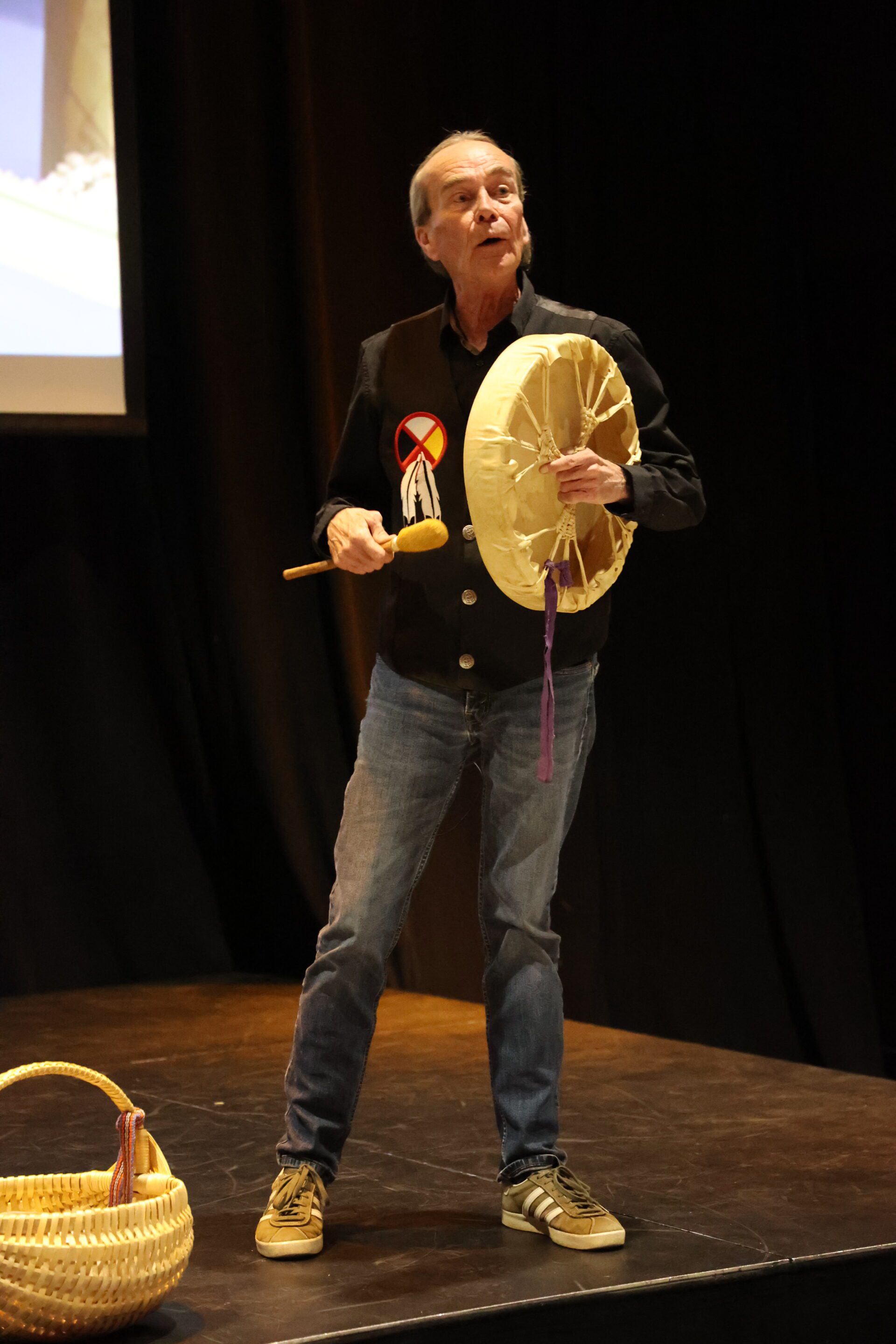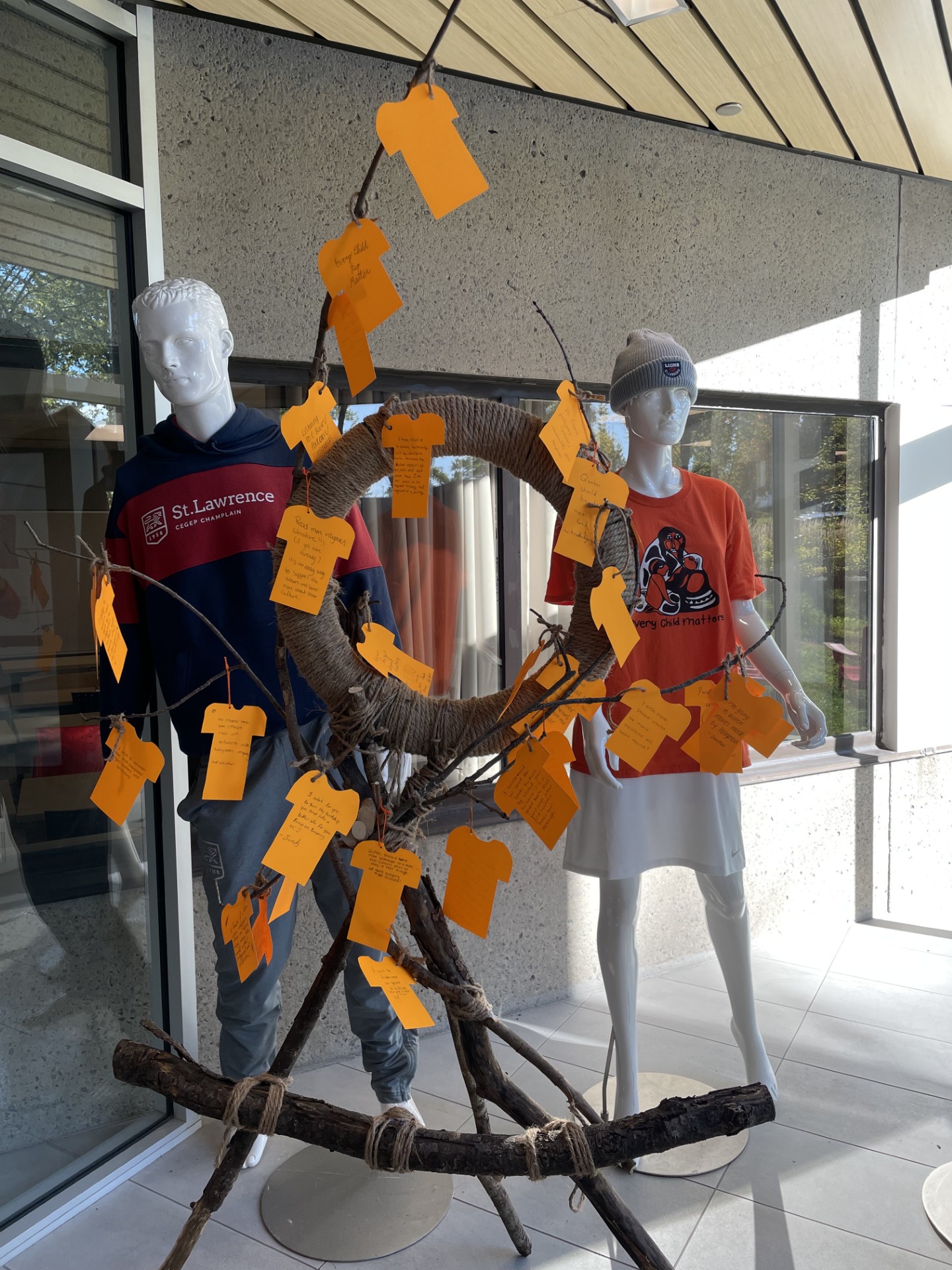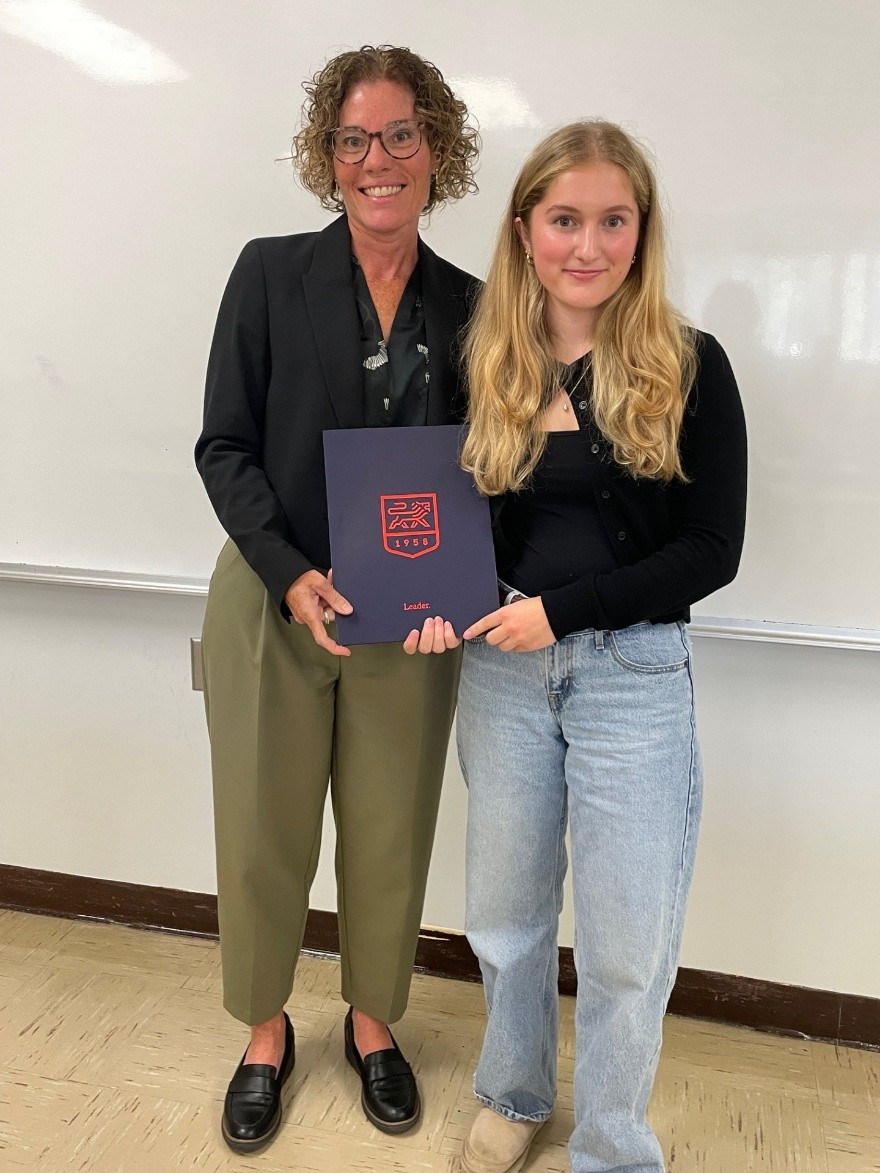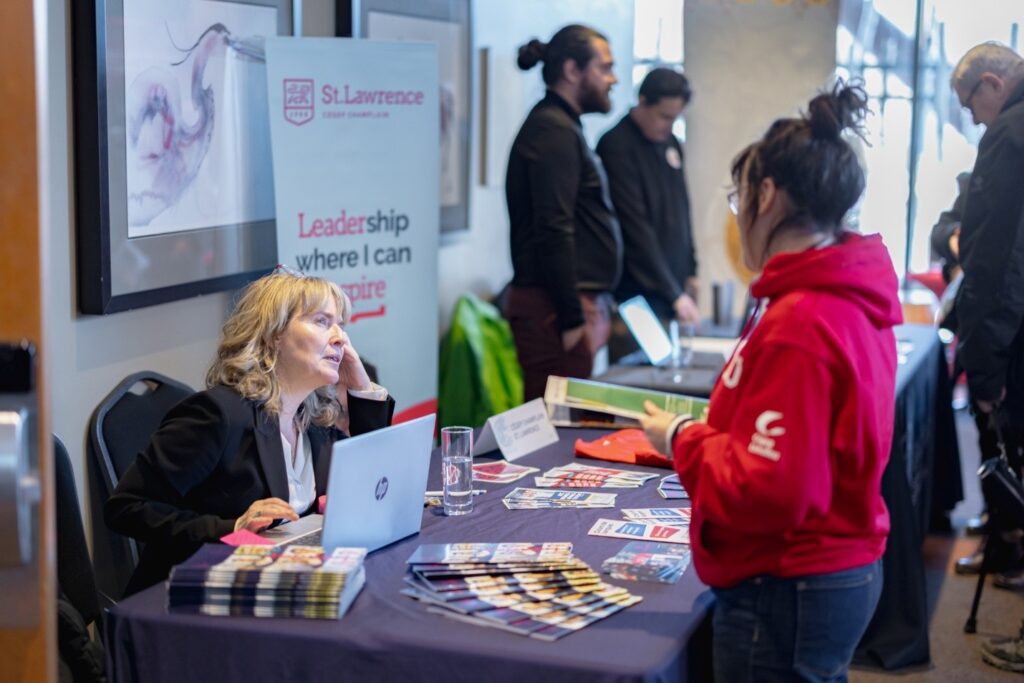Guest Speakers • 17 October 2025
The Red Road to Recapture our Culture: A Talk with Tim Adams

On Thursday, October 9th, St. Lawrence had the pleasure of hosting the talk “The Red Road to Recapture Our Culture”: A Journey with Tim Adams into Mi’gmaq Traditions and the Meaning of Reconciliation.
Adams is a tradition keeper of the Mi’gmaq Nation of Gespeg, in the Gaspé peninsula, a storyteller, language advocate, and cultural guardian. One of the few Mi’gmaq speakers in his community, he has dedicated himself to preserving and transmitting his Nation’s heritage. This event was held as part of the college’s activities organized for the National Day for Truth and Reconciliation and was a moment to recognize the importance of listening, learning, and walking together.
Adams, originally from the Montreal area, grew up outside of his ancestral community in Gespeg. While he visited annually through much of his life, he long felt a draw to return and learn. Several years ago, he took the initiative to involve himself more deeply in the community, with the aim of building and sharing knowledge. He travelled to Listuguj, situated at the mouth of the Restigouche River, which separates Quebec from New Brunswick. The elders were expecting him, he says; they had long predicted that one day a member of the assimilated community would return to Gespeg land to learn all he could about the culture, community, and language.
Adams struggled for ten years to learn the Gespeg language, due to limited resources. He compares the experience to trying to communicate with a francophone peer when he was a child. With the aim of making the language more accessible to others, he developed a Mi’gmaq lexicon for the community. Efforts like this allow the language to retain its vitality for future generations of speakers. Many Indigenous languages have been lost or eroded due to, among other factors, legislation that prevented the use of traditional languages and religions by Indigenous communities. By the time these laws were reversed in the 1970s, for many, it was too late. Fortunately, students from his community who attend elementary school are now able to do so in a mix of English and Mi’gmaq, Adams shared. He has become a passionate advocate for language revitalization.
In addition to his linguistic efforts, he loves to share music and song with young people. Tradition and language can be kept alive through music passed between generations. Singing is the best way to learn a language, he declared, sharing some songs with the audience. As he sang, he accompanied himself on a drum, a sacred object that only the owner is allowed to touch. It represents healing and medicine, he shared. Other objects Adams brought to St. Lawrence included his pipe, which had been passed down for generations, an eagle feather, and a medicine bag that once belonged to an important community figure. Like the songs Adams has learned, these items travel through the community and keep alive traditions even in the face of cultural erosion.
Since 2012, Tim Adams has worked as a guide-interpreter at the Mi’gmaq Interpretation Site of Gespeg, where he shares Mi’gmaq legends, leads cultural visits, and contributes to the transmission of language, traditional knowledge, and spiritual practices. He also collaborates with the Percé UNESCO Geopark, where he delivers storytelling sessions and presents Mi’gmaq culture and worldview to the public every summer.
His personal journey mirrors that of many Indigenous Peoples: he has walked the path of reclaiming his culture, reconnecting with language, spirituality, and ancestral knowledge that were, for generations, silenced through colonial policies. This lived experience makes him not only a cultural guardian, but also a witness to the resilience and continuity of his Nation.
What can we do to promote truth and reconciliation? Adams says that one of the best ways to learn about Indigenous people is to attend a powwow. These intergenerational events welcome people of all backgrounds and are a great opportunity to learn. Adams himself serves as a fire keeper during Gespeg powwows, tending to the sacred flames for the duration of the event.
Engaging with Indigenous languages and cultures is a great step toward reconciliation, too. We can listen to Indigenous music, read books by Indigenous people, and wear Indigenous-made jewelry. Cultural appreciation is always encouraged.
As part of St. Lawrence’s activities for the National Day of Truth and Reconciliation, students and employees were encouraged to make pledges and attach them to a display, which is now visible at Entrance B. On it, each orange shirt holds a hope for reconciliation, which can inspire anyone wishing to take their own steps toward a brighter future for Indigenous peoples and for the relationships between nations.


Scholarships and Awards, Academics • 17 September 2025
Béatrice Joubert receives PW Sims Entrance Award for Academic Excellence

Institutional Development • 08 September 2025
Introducing the New St. Lawrence Website

Institutional Development • 08 August 2025